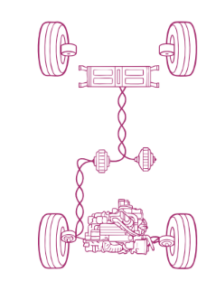(R)EVOLUTION - Regenerative braking – Recovering energy to move forward more efficiently
Regenerative braking – Recovering energy to move forward more efficiently
In the automotive industry, energy has long been considered a resource that is consumed… and then lost. Each time the brakes were applied, the vehicle’s kinetic energy was dissipated in the form of heat, wasted in the brake pads and discs. But at the turn of the 1990s, an idea from other sectors – already used in electric locomotives and certain lifts – began to transform this vision: why not recover this energy for reuse?
This led to the development of regenerative braking, a technology that converts some of the vehicle’s kinetic energy into electricity during deceleration or braking. Rather than being lost, this energy is stored in a battery, ready to be used during subsequent acceleration. The remarkably elegant principle serves a dual purpose: improving energy efficiency and extending the range of electric vehicles.
The automotive industry adopted this system in the 1990s, when the first hybrid prototypes were developed. But it was really with the Toyota Prius, launched in 1997, that regenerative braking became widely available. The first hybrid car to be produced on a large scale, it clearly demonstrated the potential of this technology by combining a combustion engine with an electric motor, proving that it was possible to drive further on less fuel.
The benefits are not limited to reduced fuel consumption. By relieving the mechanical brakes, the system also extends the life of the brake pads and discs, thereby reducing maintenance costs. For the driver, the driving experience changes subtly: the braking sensation may feel different, more progressive, while the very idea of “energy recovery” adds a new dimension to mobility, making it more rational and sustainable.
Today, regenerative braking has become a staple of hybrid and electric vehicles. Whether city cars, saloons or even electrified heavy goods vehicles, they all use this principle to maximise their range and reduce their energy impact. In a world where every kilometre of efficiency counts, this technology stands out as one of the symbols of the transition to more environmentally friendly mobility.
Thus, from an idea inherited from industrial infrastructure to a central innovation in contemporary automotive engineering, regenerative braking illustrates how energy recovery and reuse can redefine the way we design and experience driving.



